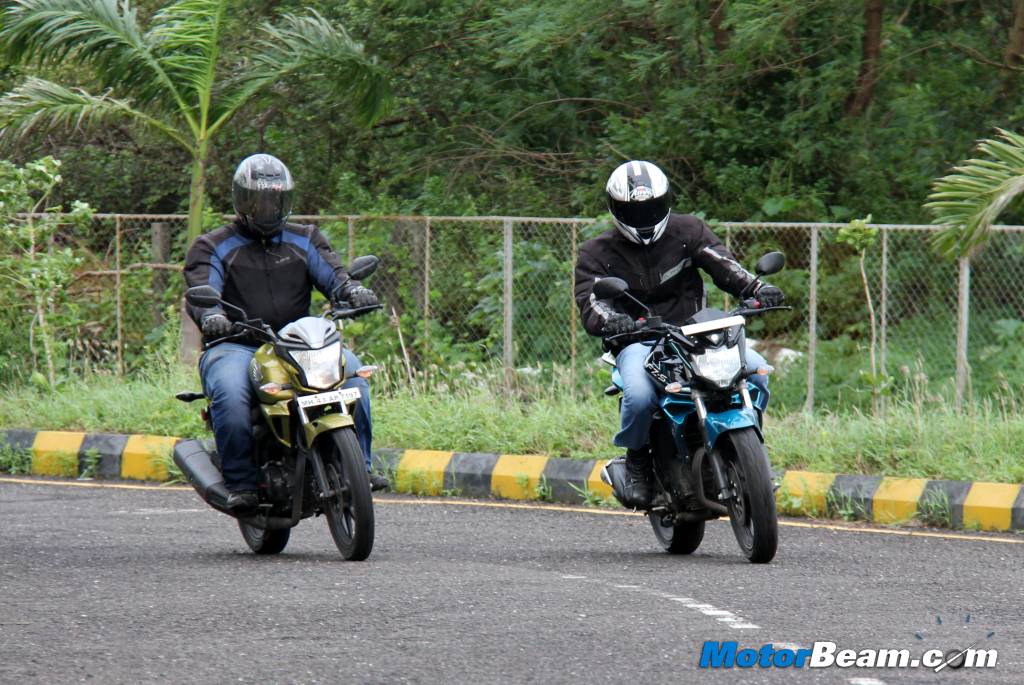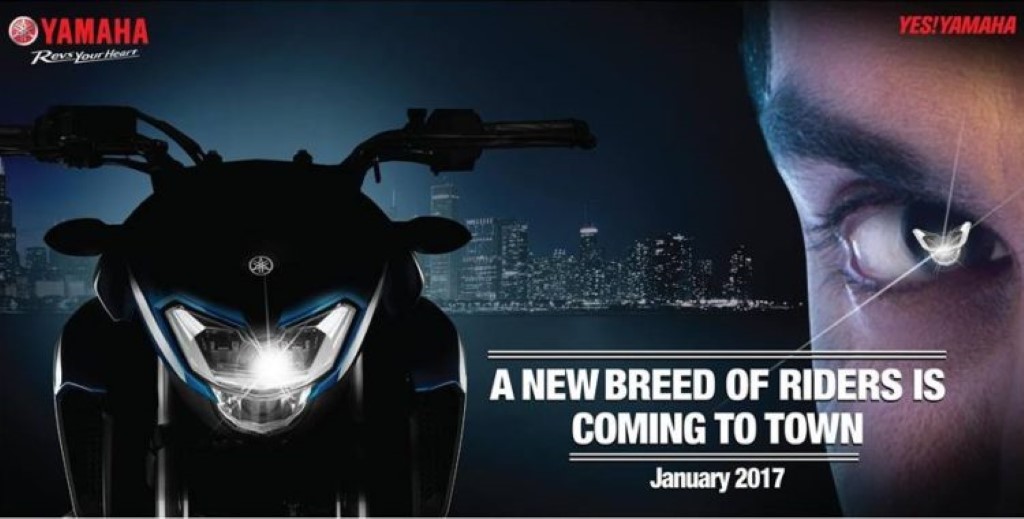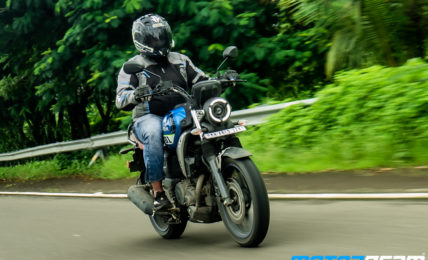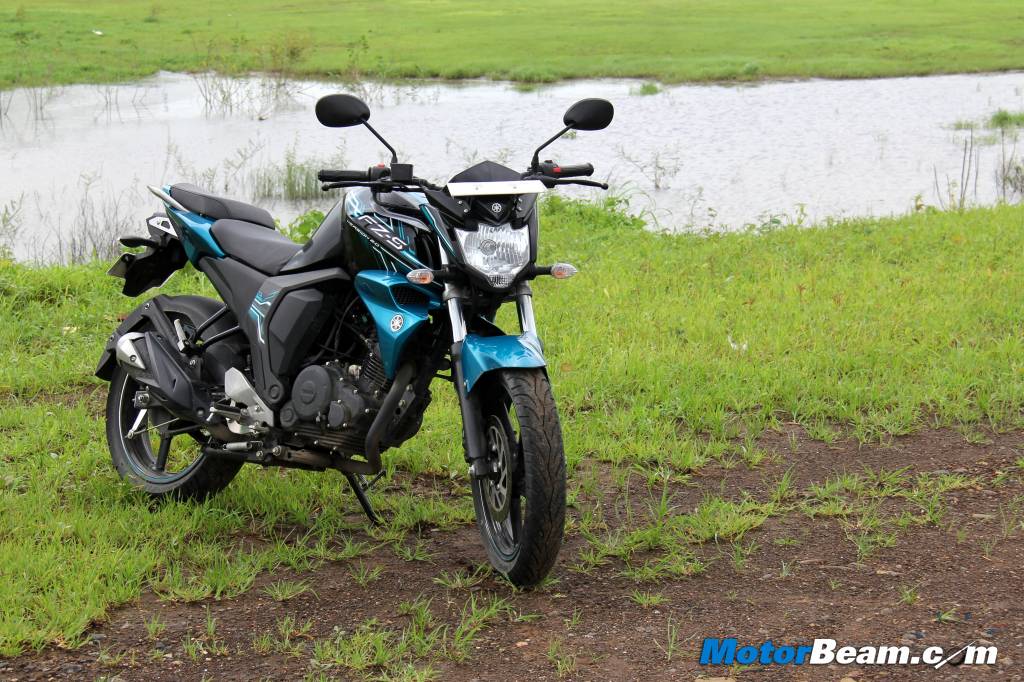
Yamaha FZ-S V2 Review
Bike Tested: 2014 Yamaha FZ-S FI V2.0
Price OTR Mumbai: Rs. 91,900/-
The FZ-S was always ahead of its time and Yamaha again sticks to its guns with the V2.0
If you ask anybody on the streets of India about the Yamaha FZ, they will say a slogan that Yamaha themselves came up with for the FZ. The FZ is the lord of the streets. The FZ continues to impress on every count like any other Yamaha product. The blind folded trust that the people have for Yamaha is truly something which is unmatched when compared to other competitors. The FZ, till the new version came, sold impressive numbers and was high on quality and immense amount of fun. The Yamaha FZ is by far the segment leader in terms of sporty appeal. The way it ride, handles, looks and the way it puts a smile on your face is something. The only glitch in the armour was the mileage numbers. We thought it will get a sixth cog, taller gearing or changes to the engine. However, Yamaha went the full banana and added fuel-injection to a motorcycle that was just an entry level sporty bike which shocked everyone. We told you this as an exclusive scoop and now as you can see, we were right. However, when Yamaha displayed V2.0 on the stalls of the 2014 Auto Expo, it went somewhat un-noticed as people thought it was a teaser or something which was going to land up years later. But the moment the spy shots started coming on the internet, it was evident that the launch is not far away. We ran some rings in Delhi on the new Yamaha FZ V2.0 and now we have it here, back at headquarters, to put this thoroughbred through a thorough road test and tell you what exactly has improved.
Short, low and muscular look projects an image of a substantial motorcycle
Styling – Everything has changed yet nothing has changed. Confused? Well, the overall proportions remain the same and it will be recognised as the FZ but there are changes everywhere. The neat fuel tank remains pretty much the same but there are minute differences to the height and sculpture, the areas which matter more to men. Boxy looking tank shrouds hanging from the tank are well executed too. The rear gets an aluminium bracket which holds the tiny mudguard and number plate. However, the new thing is the long running full faced mudguard on top of the rear tyre which works pretty well in the rains, looks neat but spoils the look of the FZ loving purist who buys and loves it for the sake of that massive rear tyre only. Tyres remind of the pin stripes on the wheels that are multi-coloured and look fabulous standing still or going at 100 km/hr. The new tail piece with split seats and split grab rails look well proportioned.
The FZ-S gets nice graphics and the bike looks meaty with good attention to detail
At the front, the headlight cowl looks sharper but the headlight shape is very Asian and the stoplight at the rear gets even stubby. The exhaust looks like an Israeli rocket rather than the earlier juke box. We complained about the cheap turn indicators on the bike and the new bike has turn indicators with clear lens and look particularly rich. We also complained about the gas-tank cover which still isn’t a flap-mechanism yet, stop copying choppers Yamaha, it’s a pain every time you fill up! Fit-finish, quality is always splendid and “digital” graphics with shiny colours are chosen to attract as many eye balls on the road. Overall, the macho look has been toned down to look sharp and lean but the tank remains pretty much the same so the styling will grow over you in very little time.
New instrument cluster looks good and is a step up but still devoid of features
Instrument Cluster and Switchgear – Now this is where the complete revision has taken place. The old small round shaped instrument cluster is gone and is replaced by a huge panel like screen which has the same features as the old one except a new Eco mode on the right which when you are standing on the signal will look like you are in neutral but you are not. Green light on the dash indicates neutral for 90% of bikers. This is something which will take some time to getting used to as the original neutral light is on the left side with solitary turn indicator on each side and the engine check light which remains standard. Still the bike does not have two trip meters and instead has only one like the old FZ which is a shame at this price point considering one more fact, that the console does not feature a clock either. The upcoming and current competitors already have it. Switches are same and so is the quality of switches with the cluster being up to the mark and not disappointing like rivals.
Comfortable riding position while giving you the big bike feel, the FZ fits all sizes
Ergonomics – The forward biased, rearset footpegs’ riding position is an absolute delight because of the sporty credentials the FZ offers. Maximum comfort and yet the big bike feel with a lot of feedback from both ends. Both rider and pillion are extremely well cushioned and the seats are very supportive. The split seats result in the pillion comfort going from among the worst in the old FZ to the best in the new FZ. Rear view mirrors despite small in size, do a very good job to show what is behind. The sculpted tank and well done footpeg position allows quite a lot of room and should be comfortable for those long inter-city journeys.
Peppy and refined fuel-injected engine makes way into the new FZ
Performance – Coming to the most important part is the engine. Yamaha says the motor is pretty much all new. All internal parts have been lightened and the FZ loses around 1.5 kgs from the engine itself which is substantial considering the entire bike has lost 3 kgs. Physically when you see the engine closely, it even looks slimmer than before. However, the main thing is that it has lost displacement, power and torque which was something very crucial and plus points for the FZ. To be precise, 4cc, 1 Nm and .9 PS has been lost and power is now being produced 500 RPM higher than before. Minute changes in bore and stroke still make it achieve the tag of a square engine. It is not an over or under-square engine despite numbers are higher on the bore and stroke side.
[youtube:https://www.youtube.com/watch?v=BZJZM_eZr-A 540 375]
Despite all this output loss and disappointment, Yamaha says they have tweaked the sprocketing and precise fuelling means the FZ FI is quicker to 60 and 100 km/hr by a good margin. How quick? VBOX numbers say that the bike does 100 km/hr in 20.5 seconds and 60 km/hr comes up in 5.58 seconds which is the same as the old FZ but since the testing was with almost ruined engine oil (brand new engine), we definitely think it will be half or almost a second faster when it is in good condition. Top speed is the same, 107 km/hr (VBOX tested) while speedo shows 115 km/hr. How does the engine feel you may ask? Well it sounds a lot more sonorous than before and the fuel-injection makes it a proper screamer like the R15, albeit less power and all the power is in the low and mid-end of the rev range rather than the top-end biased R15. That little bit of top-end which was there is also gone because the sprocket is now 41T instead of 40T and the engine as always feels stressed at 90 km/hr but significantly less than the carbureted version.
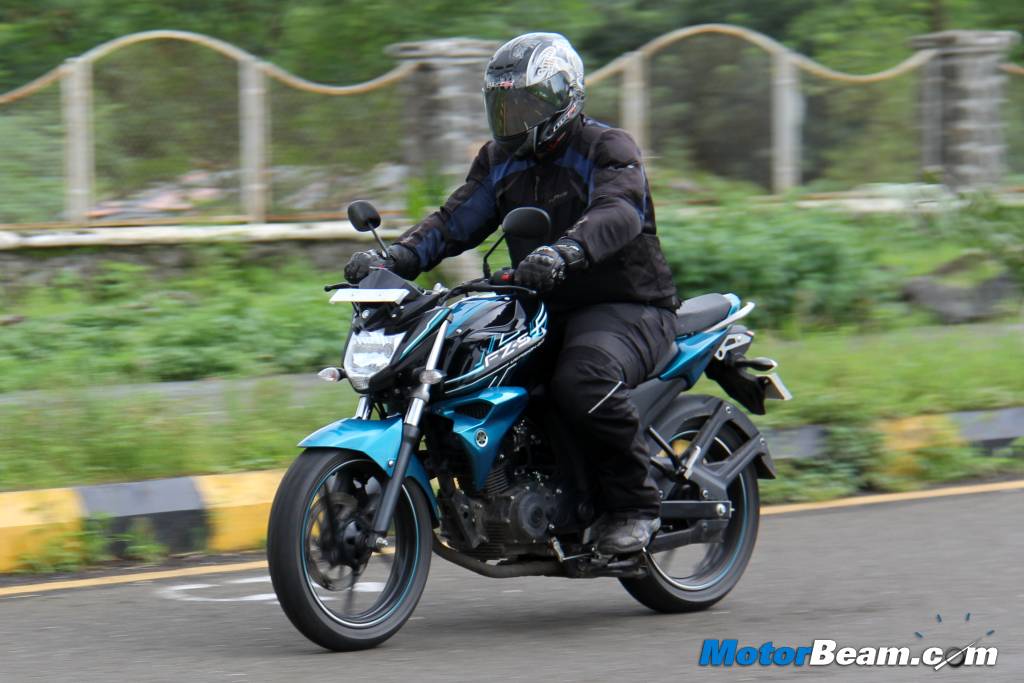
The fuel-injected motor offers excellent mid and low-end torque while offering best NVH
Gear ratio stacking is also on the shorter side, so you can rev each gear till 9500 RPM but the power band is narrow. Changing gears is also an easier task than before as it does not feel springy, but thudy, like the one on Hondas but Yamaha has its own character here. The engine is now very peppy and throttle response is far more better. Closed-loop fuel-injection has been used and the injectors need to be cleaned every 6000 kms which comes to be every second service and cleaning it takes a good amount of money too. However, the upkeep cost with Yamaha’s other spare parts, as proven by our long term report, is on the cheaper side. Like any Japanese engine, the unit is smooth and refined no matter what the weather and condition of internal lubricant is. NVH levels in short, are excellent. Speaking about the most important part, mileage, whether it has increased or not has an obvious answer, YES! The FZ is capable of returning 51 km/l in the city and 57 km/l on the highway (Yamaha’s Blue Core technology working to maximise efficiency). The worst we achieved was 35 km/l.
Loves to lean, loads of grip and goes quickly around corners, the FZ is a lot of fun
Riding Dynamics – Yamaha has done a lot of changes in this department. This department is, as we know, tells you how the motorcycle feels when you lean over and turn the handlebar in the opposite direction. Yamaha says the chassis is entirely new but the same single down-tube chassis remains. The dimensions are shorter in every aspect. Length is down by 85 mm, height is down by 60 mm, wheelbase is down by 4 mm and not to forget the bike is lighter by 3 kgs too. The rake and trail remain near identical to old numbers and so does the front fork size and rear monoshock. What has changed for the good though is the damping which changes the ride quality. At #1 setting of the rear suspension, the ride felt slightly harsh. Nevertheless, with the new bike that harshness is gone. The FZ still remains a very stiff motorcycle. It does not offer a cushioning ride like the Bajaj Pulsar series. This shows Yamaha’s attention to detail and customer feedback being taken seriously. Most of the problems we reported in the long term report (including this one) are all gone.
The FZ is by far the best ride and handling package in the segment, since inception
The tyre size remains the same but instead of Revz-Z, it is Revz-Y now. The tyre profile at the rear is now more rounded which makes the steering even more responsive and sharper. The new tyres are less prone to puncture, says Yamaha. Tyres grip very well in all conditions. It is only when they come in contact with gravel, they tend to lose grip quite early than normal tyres thanks to the maximum amount of soft compound rubber being used all over the tyre. The radial tyres also help extract the best economy and performance numbers. With the help of these excellent tyres, the brakes are excellent too. Two piston calliper at the front with same rotor size and since drum brake has been carried forward at the rear, they provide great stopping power and when the anchors are deployed fully, there is very little fork dive too. All of this translates into the FZ having the best, sporty chassis, something you can never find with a lamp in your hand if you went around the world to search for it. The immediate notice is the eagerness of the chassis, it is just way more rapid and not compromising on stability at the same time, this is an awesome feat achieved. The confidence levels are very high, the surefooted-ness deserves an award and turn-in and mid-corner balance is just superb. With ride quality better than before, there is no chance of feeling the “being thrown off” the harsh way either. Overall, a nimble bike in the city and a stable motorcycle on the highway in one package, plus thanks to that peppy engine and best in class dynamics, the Yamaha FZ continues to be a recipe for fun.
The Yamaha FZ has always been the best in the segment and will continue to be so
Verdict – The Yamaha FZ rarely had any weakness. Whatever it was, it was all sorted out over time in small upgrades with colors ofcourse. Call it small seats, rattling chain, puncture prone tyres, all were gone over time and then comes this new model with even more improvement than before which makes it a deal hard to resist. The fuel-injection makes it more efficient than ever before which solves the major glitch in the package which was always persistent. However, despite whatever it was since day one, it was praised for quality, dynamics and aesthetics which made people buy it with eyes blindfolded because there was hardly anything in this segment which was as good as this despite it being on the pricey side. The Yamaha FZ V2.0 is a comfortable and efficient motorcycle with all its minor niggles gone down the drain. We wish it was more value but considering less value too, it has been the winner of many hearts over time and thus there is no stopping the FZ V2.0.
The Yamaha FZ V1.0 was the best in the segment and kept its crown for six years and did not feel threatened to lose it at any point of time. Here the new FZ V2 comes and just adds a huge diamond to the crown.
Yamaha could have added more value to the package by adding features
What’s Cool
* Performance
* Dynamics
* Tyres
What’s Not So Cool
* LED tail light missing
* Reduction in power (not performance)
* Missing rear disc
Alternatives: Bajaj Pulsar 150/180, Honda CB Trigger
Competitors need to buck up as Yamaha readies another nuke in the segment
2014 Yamaha FZ-S FI V2.0 Specifications
* Engine: 149cc, 2-valve, SOHC
* Power: 13.1 PS @ 8000 RPM
* Torque: 12.8 Nm @ 6000 RPM
* Transmission: 5-speed
* 0 – 100 km/hr: 20.4 seconds
* Top Speed: 107 km/hr
* Fuel Consumption: 50-55 km/l
* Fuel Type: Petrol
* Frame: Single Downtube
* Suspension: Telescopic forks (Front), Monoshock (Rear)
* Tyres: 100/80/17 (Front), 140/60/17 (Rear)
* Brakes: Disc (Front), Drum (Rear)
2014 Yamaha FZ-S FI V2.0 Dimensions
* Length x Width x Height: 1990 mm x 770 mm x 1030 mm
* Wheelbase: 1330 mm
* Ground Clearance: 160 mm
* Seat Height: 790 mm
* Fuel Tank Capacity: 12-litres
* Kerb weight: 132 kgs
Further Reading –
Honda CB Trigger vs Yamaha FZ
Yamaha FZ V2 vs Suzuki Gixxer vs CB Trigger vs Apache 160
Suzuki Gixxer vs Honda CB Unicorn 160 vs Yamaha FZ
Honda CB Unicorn 160 vs Suzuki Gixxer vs Yamaha FZ – Video


